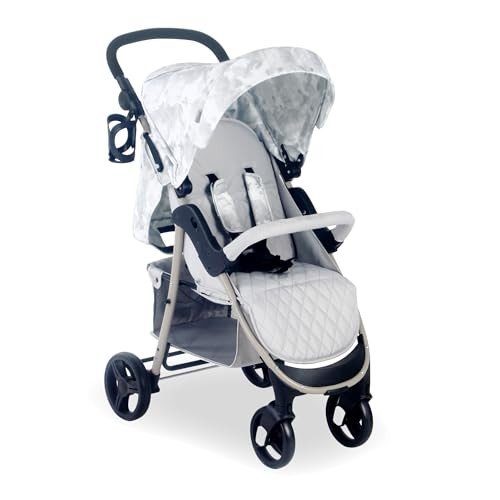Understanding Prams and Pushchairs: A Comprehensive Guide
When going into the world of being a parent, among the most crucial choices to make includes choosing the right devices for carrying a newborn or toddler. Among the top contenders for this purpose are prams and pushchairs. straight from the source serve the basic function of assisting moms and dads and caregivers carry their kids easily, but they have unique features, advantages, and use cases that set them apart. This post intends to explore prams and pushchairs extensive, guiding prospective buyers through their important distinctions, advantages, and functions, and dealing with often asked concerns.
What is a Pram?
A pram, short for "perambulator," is a type of vehicle designed particularly for infants. It features a completely reclining seat or bassinet, so a baby can lie flat while being carried. This is especially crucial for newborns whose spinal columns are still developing. Prams frequently have bigger wheels, offering a smoother trip on various terrains.
Key Features of Prams:
- Fully Reclining Seat: Allowing infants to lie flat.
- Bassinet Design: Some designs come with a detachable bassinet.
- Roomy Interior: Adequate area for the child to move easily.
- Robust Frame: Designed to be more stable, preferably suited for metropolitan and backwoods.
Advantages of Prams:
- Comfort: Provide a cozy area for the baby.
- Versatility: Many can be transformed to a pushchair as the child grows.
- Stability: Larger wheels and frames use higher stability, specifically on uneven surface.
What is a Pushchair?
A pushchair is a light-weight option frequently used for toddlers. Unlike prams, pushchairs typically feature a seat that can sit upright and may not provide a completely reclining alternative, making them ideal for older babies who can support their heads and necks. The majority of modern-day pushchairs featured different features tailored towards convenience for the moms and dad and convenience for the kid.
Key Features of Pushchairs:
- Multi-position Seats: Can accommodate sitting upright or reclining choices.
- Lightweight Design: Easier to carry and navigate.
- Foldable Framework: Often fold up compactly for simple storage and transport.
- Larger Storage Baskets: Convenient for bring baby essentials.
Advantages of Pushchairs:
- Lightweight and Portability: Easy to transport and keep.
- Steerability: Smaller wheels enable sharper turns.
- Accessibility: Easier access to older toddlers.
Secret Differences Between Prams and Pushchairs
| Function | Pram | Pushchair |
|---|---|---|
| Age Recommendation | Newborn to 6 months | 6 months to 4 years |
| Seat Position | Fully reclined | Multi-position |
| Weight | Much heavier | Light-weight |
| Terrain Usage | Ideal for all surfaces | Best for city/urban environments |
| Size | Larger, bulkier | Compact, simple to fold |
Choosing the Right Option for Your Needs
The decision to pick between a pram and a pushchair mostly depends on your particular lifestyle and your kid's age. Here is a breakdown of considerations to help narrow down the options:
Considerations for Prams:
- If you reside in a rural location with rough surface, a durable pram may be better.
- If you prepare to use it for long walks or trips, the comfort of a pram can be useful.
- Suitable for moms and dads who want a model that will comfortably support a newborn.
Factors to consider for Pushchairs:
- If you need something lightweight for city living or public transport, a pushchair may be a better fit.
- For moms and dads who desire a flexible alternative for young children with numerous position settings.
- If storage area is a concern, the compact nature of pushchairs provides a solution.
Common FAQs
1. Can you use a pushchair for a newborn?
While lots of modern pushchairs use reclining seats that can be utilized for newborns, it's usually suggested to use a pram or a pushchair with a bassinet option for sufficient support.
2. For how long can you utilize a pram or a pushchair?
Prams are generally utilized for infants approximately six months, while pushchairs can be suitable for children as much as 4 years or more, depending upon the model.
3. Are prams more pricey than pushchairs?
Prams are typically costlier due to their style, flexibility, and products. However, expenses can vary extensively depending upon brand name, functions, and age recommendations.
4. Is it required to have both a pram and a pushchair?
Not always. Many moms and dads choose a 2-in-1 system that integrates both features, permitting them to adapt as their child grows.
5. What should I focus on in picking one?
Focus on safety functions, convenience, weight, size, and how well it fits into your lifestyle. Read evaluations, and test drive different designs when possible.
Selecting between a pram and a pushchair is an important decision for brand-new moms and dads and caregivers. Both alternatives have special functions that cater to various age varieties and way of lives. By comprehending these necessary distinctions, advantages, and suggestions, parents can make a more educated choice that fulfills their household's needs. Whether starting a leisurely stroll in the park or navigating the pressure of city streets, the right pram or pushchair can improve the experience, providing safety and comfort for both the child and the caregiver.

